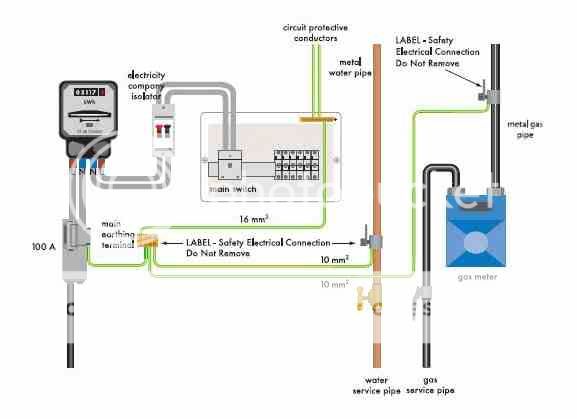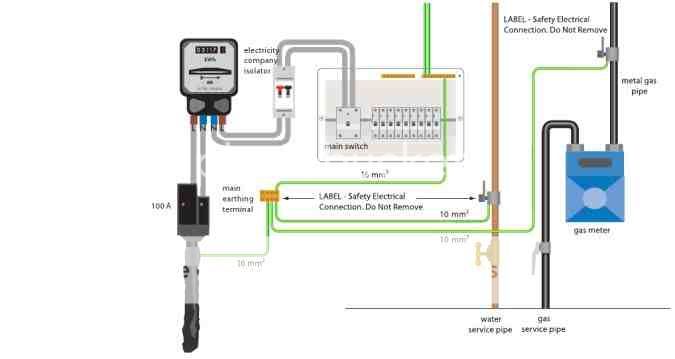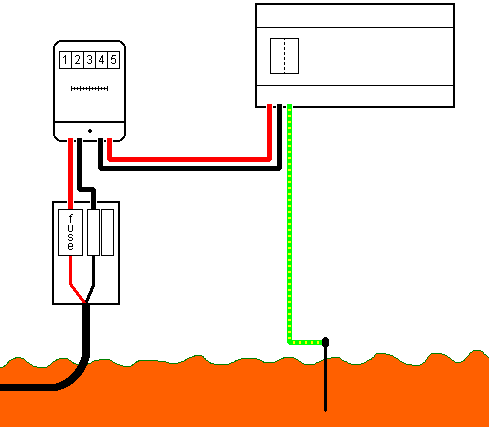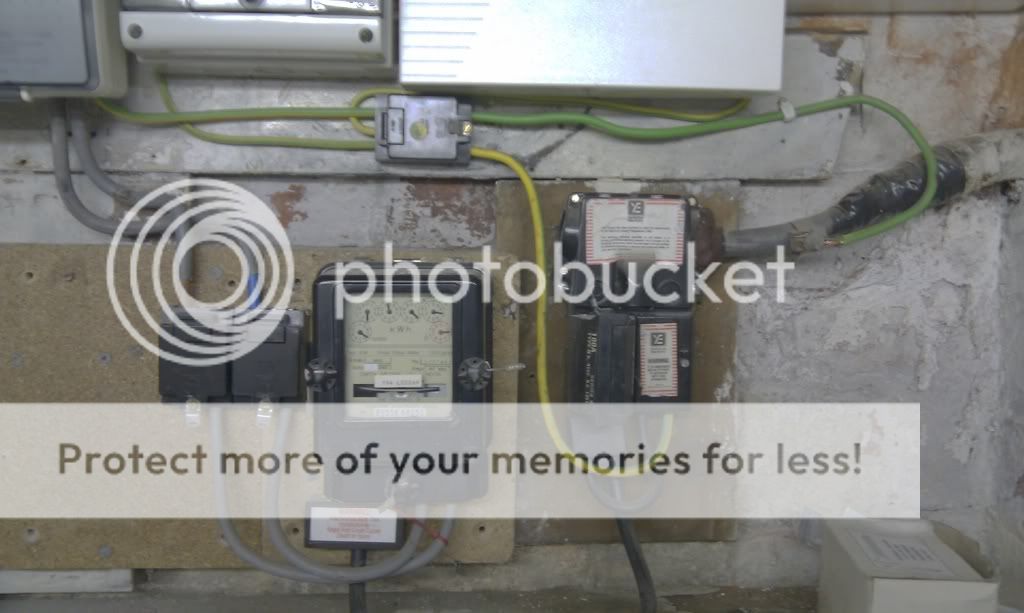P
Paul.M
This is for the people still in or has just left their electrical education or for those of us that need a refresher in domestic earthing arrangements. It's all very well looking at prity diagrams in college and in books but its different when your out in the field for the first time. Hope this thread helps you and I hope that other members will post up their pictures of main incomers/earthing so others can learn and understand this subject better. I wish I could refer to something like this when I was in college.
First of all we have 3 types of earthing arrangements, TN-S, TN-C-S and TT.
TN-C-S

This is where the main earth cable from the main earth terminal (met) is connected to the neutral at the suppliers main fuse. A good way to remember the name of this arrangement is to think of the C meaning COMBINED.
TN-S

This is where the main earth cable from the met is clamped or solderd to the steel of the SWA or the led outer sheath of the incoming supply cable. Again a good way to remember this is to think that the S stands for SHEATH.
TT

The main earth cable from the met is connect to an earth electrode (aka earth rod). This is because not all properties are supplied with a TN system by the supplier so we have to insert a rod into the ground.
Notice how the earth cable on the TN systems go back to the main incomer, one goes to the main fuse (TN-C-S) and the other goes to the incoming cable (TN-S). If the main earth cable doesn't go back to the fuse or incoming cable it will be a TT. This is the simplest way I can put it without going into extended detail.
Now that we've seen some prity diagrams (am I starting to sound like a teacher lol) we will now look at real world photos that are not as straight forward as the diagrams.
First example, is it a TN-S or a TN-C-S or both?

First of all we have 3 types of earthing arrangements, TN-S, TN-C-S and TT.
TN-C-S

This is where the main earth cable from the main earth terminal (met) is connected to the neutral at the suppliers main fuse. A good way to remember the name of this arrangement is to think of the C meaning COMBINED.
TN-S

This is where the main earth cable from the met is clamped or solderd to the steel of the SWA or the led outer sheath of the incoming supply cable. Again a good way to remember this is to think that the S stands for SHEATH.
TT

The main earth cable from the met is connect to an earth electrode (aka earth rod). This is because not all properties are supplied with a TN system by the supplier so we have to insert a rod into the ground.
Notice how the earth cable on the TN systems go back to the main incomer, one goes to the main fuse (TN-C-S) and the other goes to the incoming cable (TN-S). If the main earth cable doesn't go back to the fuse or incoming cable it will be a TT. This is the simplest way I can put it without going into extended detail.
Now that we've seen some prity diagrams (am I starting to sound like a teacher lol) we will now look at real world photos that are not as straight forward as the diagrams.
First example, is it a TN-S or a TN-C-S or both?

Last edited by a moderator:













